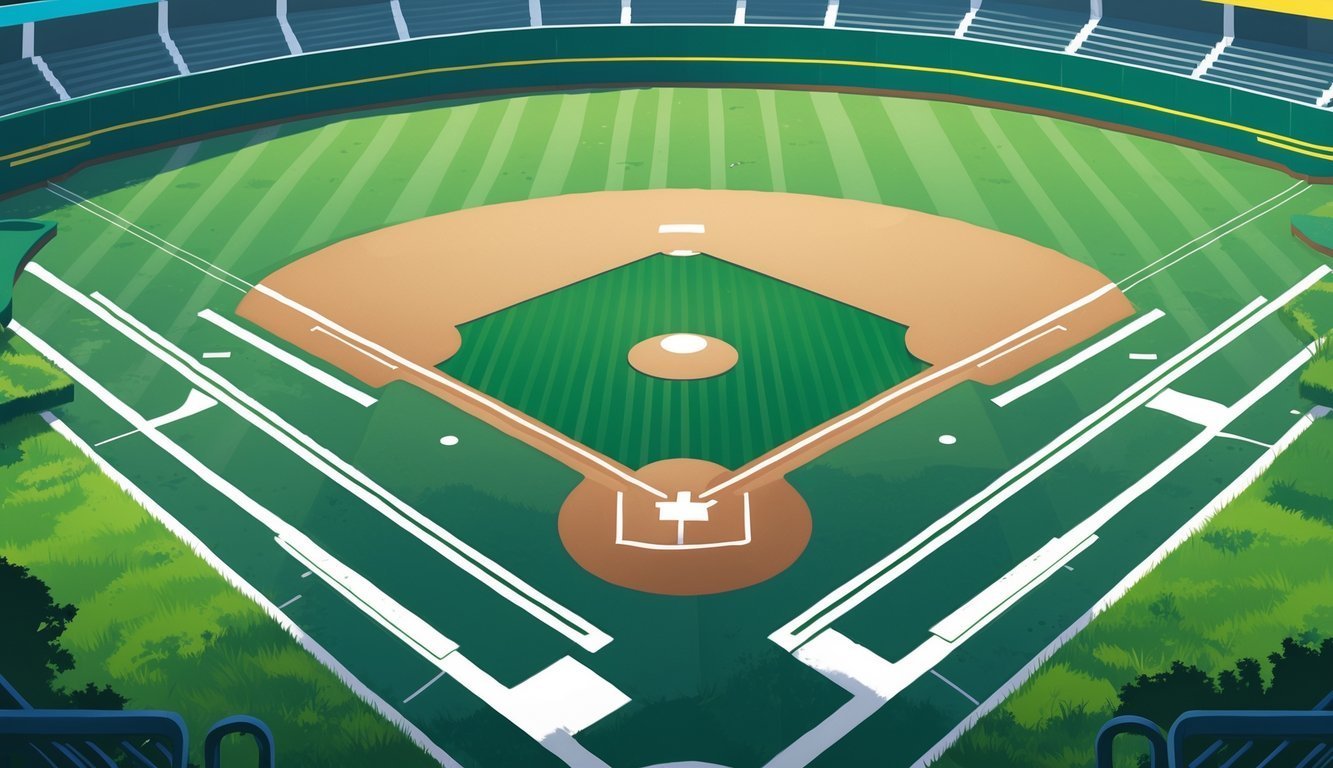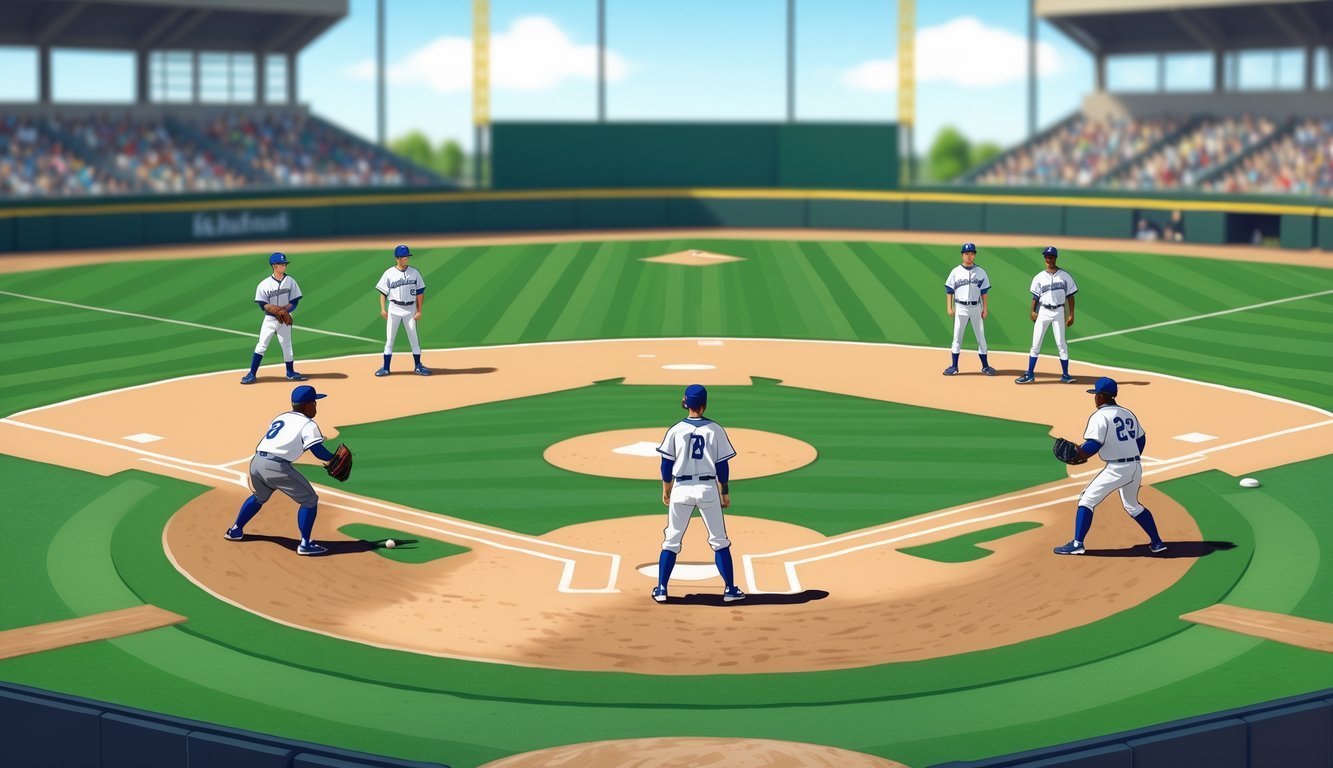PsychNewsDaily Publishers
100 Summit Drive
Burlington, MA, 01803
Telephone: (320) 349-2484
PsychNewsDaily Publishers
100 Summit Drive
Burlington, MA, 01803
Telephone: (320) 349-2484
The infield consists of four positions: first base, second base, shortstop, and third base, crucial for executing defensive plays and preventing runs in baseball.

The infield sits right at the heart of a baseball field, covering the area around the three bases and home plate. This is where important defensive plays happen—where quick reflexes and teamwork come together to stop the other team from scoring.
When you know more about the infield, you start to understand the game in a deeper way. It’s honestly easy to miss just how much skill it takes to play this part of the field well.
Each infield position carries its own job. Players here have to work together to snag ground balls, make fast throws, and cover bases in a split second.
The infield feels different from the rest of the field—everything happens up close and fast. If you want to get a better grip on baseball defense, the infield is a fantastic place to start.
You’ll quickly see why people call it the heart of the defense and how it shapes the pace of the game.

Four main positions make up the infield, each with its own spot near the bases. Knowing how each infielder works together really helps you follow the game.
The infield plays a huge role in stopping runs and making those split-second plays.
The infield has four main spots near the bases:
Each spot sits close to a base, so players need quick reflexes and strong throws. The infielders have to work as a unit to cover the bases and scoop up balls fast.
Infielders field ground balls, tag runners, and catch throws to get outs. As an infielder, your job is to keep the ball from slipping into the outfield and to make plays that force runners out.
You’ll also back up your teammates if a ball gets away. These roles demand fast reactions, strong arms, and smart split-second choices.
For example, the first baseman keeps the ball close and grabs throws, while the shortstop calls for double plays and covers more territory.
The infield sits inside the bases, right around home plate. The outfield is the big grass area beyond that.
Think of the infield as the “hot zone”—the ball moves fast, and players have to react instantly. Infielders handle ground balls and quick throws.
Outfielders chase fly balls and cover way more distance. Positions like pitcher and catcher are close to the infield but play by their own set of rules.
| Area | Main Jobs | Distance Covered |
|---|---|---|
| Infield | Tag bases/runners, catch grounders | Small, near bases |
| Outfield | Catch fly balls, prevent extra bases | Large grass area |
When you spot these differences, you start to see how each player fits into the bigger picture.

To become a solid infielder, you need good range, fast and accurate throws, and smart defensive instincts. These skills let you stop hits, get runners out, and keep your team in the game.
Every play demands focus on these basics to control the area around the bases.
Start with your ready position—knees bent, hands out front, and eyes on the ball. This stance helps you react to ground balls, whether on grass or dirt.
Work on your footwork to cover more ground. Take quick, small steps as the ball comes your way. Staying light on your feet lets you reach balls hit to either side.
When you field, use two hands to secure the ball. This simple move cuts down on errors and keeps the ball from bouncing out.
Practice clean pickups on both grass and dirt. The surface changes how the ball moves, so you’ll want to get used to both.
You need to throw to first base fast and accurately. A strong arm helps, but mechanics matter more.
Step toward your target and use your whole body, not just your arm, for power and control. Releasing the ball quickly is crucial—runners don’t wait around.
Practice throwing from different spots in the infield to build confidence and consistency. A low, flat throw gives the first baseman a better shot at making the out.
Try to keep your throws tight over the dirt—high or wide throws just cause trouble.
Good defense isn’t just about fielding and throwing. Where you stand matters, too.
Anticipate the batter’s style and adjust your spot before the pitch. This helps you cover more ground and plug up those gaps.
Talk with your teammates so everyone knows their job, especially on double plays or bunts. Knowing when to shift or back someone up makes a big difference.
And don’t forget about mental focus. Stay alert for runners who might try to steal. Your quick moves and choices can protect your team’s lead.

You might have questions about baseball and softball rules, the infield area, or how to play those positions well. This section covers those basics and explains why practice matters before games.
The infield fly rule prevents the defense from turning easy double plays. It kicks in when runners are on first and second or the bases are loaded with fewer than two outs.
If the umpire calls an infield fly, the batter is automatically out.
The infield in softball sits inside the base paths. It includes the dirt around the bases and the pitcher’s circle.
Most defensive plays happen right here.
Baseball infields are bigger—90 feet between bases. Softball infields are smaller, usually 60 feet apart.
Softball also uses a pitching circle instead of a mound, which changes how plays unfold.
Infielders focus on quick throws and solid defense. You’ll learn to cover bases, field ground balls cleanly, and work as a team to get outs.
Where you stand depends on the batter and what’s happening in the game.
The infield includes first base, second base, shortstop, and third base. Even though the pitcher and catcher are in the infield area, people usually don’t call them infielders.
Infield practice gets you warmed up and sharpens your fielding skills. It’s also a chance for everyone to build some chemistry out there.
Coaches use this time to tweak player positions, depending on the plan and who you’re up against.